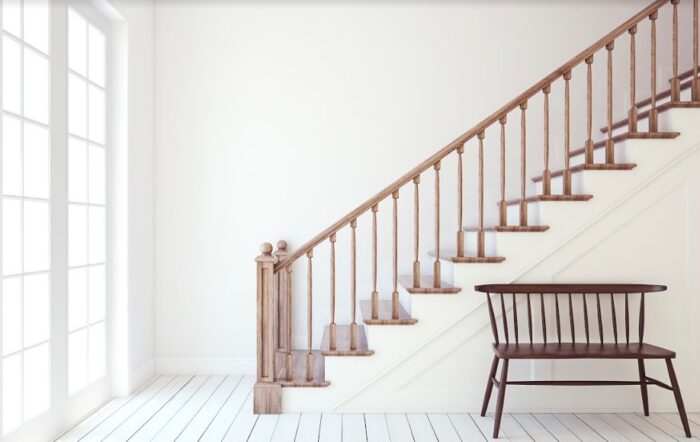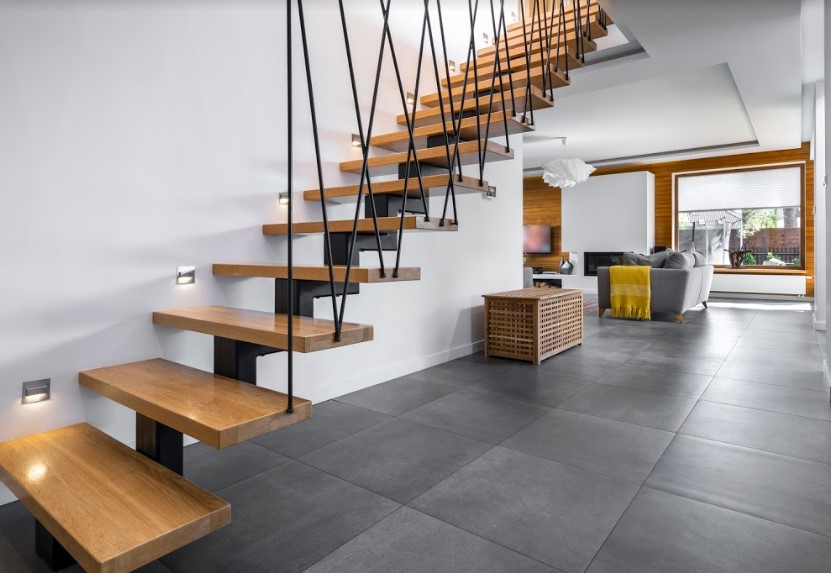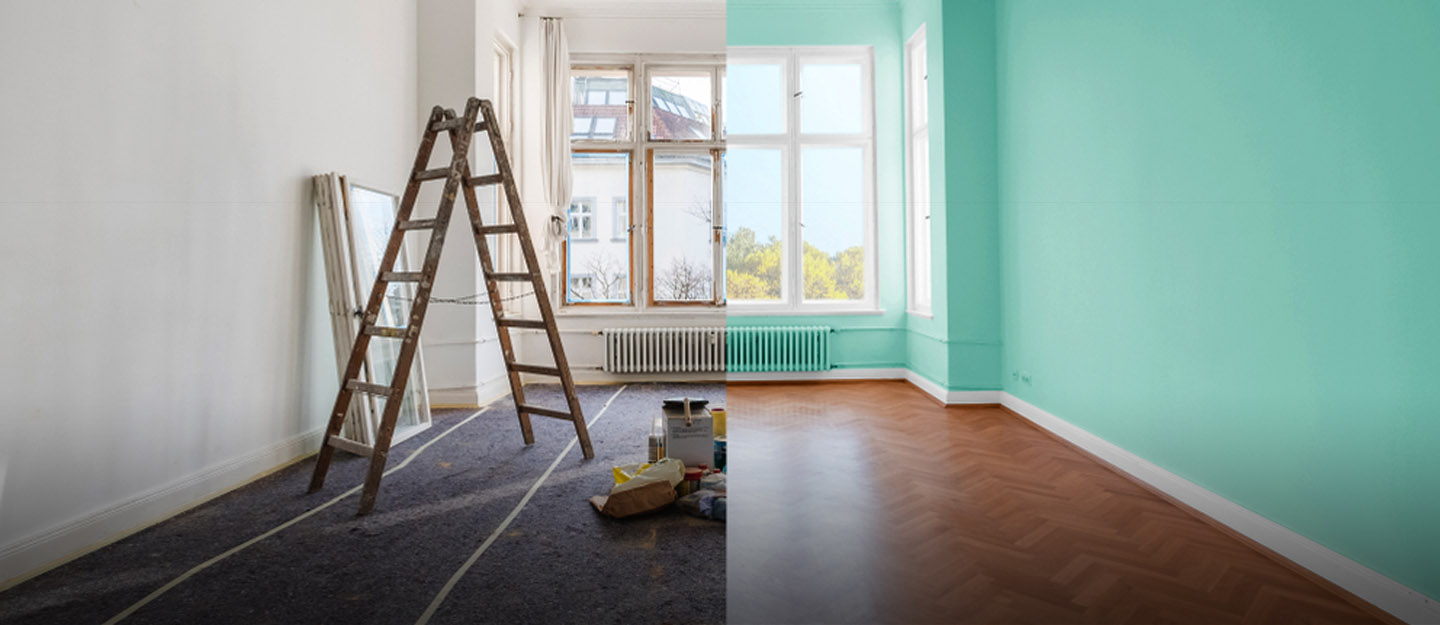Choosing the right staircase for your home is a significant decision. There are space-saving staircases, and then there are decorative staircases. A substantial portion of the decision is influenced by the amount of available space and your home’s layout. The staircase design process begins early in the blueprint phase, as altering the staircase changes the house’s blueprint.
Additionally, constructing elaborate staircases can be pretty complicated, requiring meticulous measurement and attention to detail. It’s not something that an inexperienced person should attempt unless the staircase is a simple outdoor staircase. When choosing a new staircase, keep in mind your family members and how they use the stairs, as each type has many advantages and disadvantages.
The following sections discuss the various designs of staircases and the factors to consider when choosing one:
1. L-shaped Stairs
The L-shaped staircase is another popular staircase style. It consists essentially of a straight staircase with a turn in the center or near one end. L-shaped stairs are appealing for a number of reasons, the most obvious being their aesthetic appeal. Additionally, they take up less space and can be placed in the corner of a room. Additionally, they are easier for some people to navigate due to the broader landing that breaks up the stairs’ flight. Naturally, these staircases are more challenging to build and thus more expensive. Furthermore, L-shaped staircases typically require support at the landing and turn.
2. Floating Staircase
Floating staircases are a modern take on a classic style. A floating staircase is a type of straight staircase that consists of treads without risers. Apart from that, the treads are attached to the wall so that the support is hidden or barely visible. To create the illusion of floating, glass or plexiglass risers are occasionally used. While people frequently use wood, materials such as glass, stone, or concrete filled metal pan stairs are also commonly used. It’s a contemporary look that often eschews handrails, and glass can be used in place of traditional railings to provide additional protection without sacrificing the open feel. Again, any floating style must adhere to local building codes.
3. U-shaped Stairs
Typically, U-shaped staircases consist of two parallel flights of stairs connected by a landing at the switchback. Additionally, these are more pleasing to the eye than straight staircases. Additionally, they require less linear floor space, which benefits corner designs. Typically, the landing is quite substantial. A U-shaped staircase’s primary disadvantage is the switch, making moving larger pieces of furniture more difficult.
4. Straight Stairs
Straight staircases are the most popular and least expensive type of staircase to install. Straight staircases are the most frequently used for their cost-effective design. Pre-cut risers — the staircase’s vertical component — are widely available in lumberyards and home improvement centers, and many builders prefer them for their simplicity. The staircase’s straight-line design requires no additional support and is connected only at the top and bottom. You can turn the space under your straight stairs to something useful if you want to maximize your space. Additionally, this style makes railings and handrails easier to install.
Naturally, the straight staircase comes in variations, including open risers, contemporary fabrics, and metal cable railings, which significantly alter the basic appearance. While the straight staircase is the most popular, it has a few drawbacks, one of which is that it consumes more linear space, which can significantly impact your design.

5. Straight Stairs with a Central Landing
A central landing is required if you have a tall, high-ceilinged room and are considering a straight staircase that must exceed 12 feet in height. The same holds true if your proposed staircase exceeds the standard 16 risers. The primary disadvantage of straight stairs with a central landing is the added space required, which frequently prompts designers to choose another model. This type of staircase is more commonly found in commercial structures than in private residences.
6. Storage Staircase
Almost every home, large or small, could benefit from additional storage, and the frequently overlooked area beneath the stairs can be converted into valuable storage space. Rather than simply walling off the area, the most popular method is to build cabinets beneath the risers. A second option is to convert each riser into a wardrobe, which is preferable when the space beneath the staircase is insufficiently utilized.
7. Winder Stairs
As it turns, winding stairs take on the shape of a wedge. Winder stairs, like L-shaped stairs, lack a landing. Apart from that, the stairs are continuous and turn in a wedge shape. These are much more prevalent in older homes than they are in contemporary homes. They were rarely used as the home’s main staircase and were more frequently found as the home’s secondary staircase. As a result of the trend toward smaller, more sustainable homes, this staircase style is experiencing a renaissance in popularity.
8. Curved Stairs
Curved stairwells are elegant and designed to dazzle. A curved staircase, most frequently found in or near an entryway, makes a statement in design. They’re not circular, as spiral or circular staircases are the design’s focal point. Because the curve is typically gentle, they’re an appealing choice for any style of home. They’re the most challenging type of staircase to construct and, as a result, one of the most expensive.
9. Split Staircase
A split staircase is intended to complement a grand entranceway. The split staircase, formerly known as the bifurcated staircase, is the grand dame of staircases. The stairs, typically found in a stately and expansive home’s entryway, begin with a broader flight at the bottom. A short distance above, a generous landing is followed by two narrower flights on either side of the bottom section — one to the left and one to the right. It’s a colossal, expansive, and expensive design statement intended to make a significant impression.
10. Spiral Stairs
While a spiral staircase is highly compact, it also presents a significant navigational challenge. While spiral staircases are ideal for small spaces, they remain a novelty type. Actual spiral stairs have a central post to which all radiating steps are connected as they ascend through a gap in the preceding level. Due to their delicate nature and limited space requirements, they are frequently found in beach houses and compact city dwellings.
Numerous city and municipal building codes permit spiral staircases as a secondary means of egress from a higher level, despite maneuverability issues. Indeed, this is one of the primary drawbacks of spiral staircases: one person can only use them at a time, and footing requires caution due to each level’s narrow inner portion. Additionally, transporting larger objects up and down a spiral staircase is significantly more difficult.
11. Circular Stairs
Circular stairwells make a compelling architectural case. A circular staircase is more akin to a standard staircase than a spiral staircase — think of the type found in a medieval castle. Although it circles and the steps are tapered, the curve is more relaxed than a spiral staircase, making navigation easier. Occasionally referred to as helix stairs, their angle is more graceful and open, contributing to creating a focal point in an architectural design. These require additional open space and are more expensive to construct.
Takeaway
When planning a new construction or remodeling project, the type of staircase is critical because it adds distinct visual appeal and takes up varying amounts of space in your home. There are several different types of stairs to choose from when choosing your stairs. Select your stairs based on their functionality and the style of your home.






